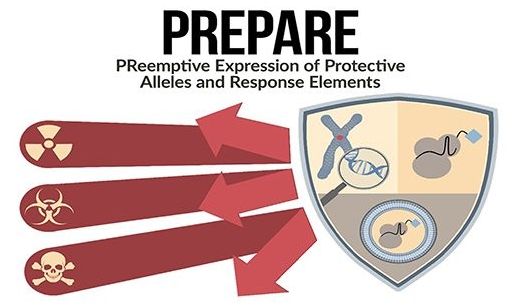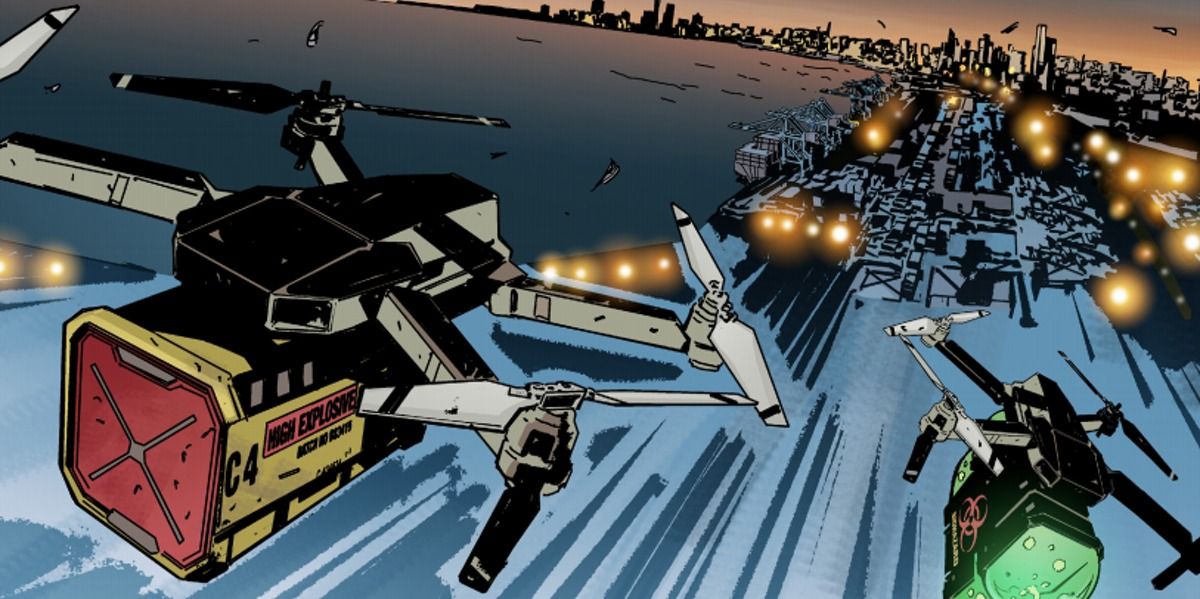Re-created viruses, toxic bacteria top new ranking of risks.



The history of Area 51 stretches back to the 1950s.
Area 51 has been the focal point of alien conspiracy theories in America for decades. The remote military base in the Nevada desert has a lot of history, and has been associated with aliens almost since its inception. Here’s why. Following is a transcript of the video:
In the early 1950s, US planes were conducting low-flying recon missions over the USSR. But there were constant worries of them being spotted and shot down.
So … in 1954, President Eisenhower authorized the development of a top secret, high-altitude recon aircraft Dubbed Project Aquatone. The program required a remote location that wasn’t easily accessible to civilians or spies. Area 51 fit the bill perfectly.

The point of the experiment was to show how easy it is to bias any artificial intelligence if you train it on biased data. The team wisely didn’t speculate about whether exposure to graphic content changes the way a human thinks. They’ve done other experiments in the same vein, too, using AI to write horror stories, create terrifying images, judge moral decisions, and even induce empathy. This kind of research is important. We should be asking the same questions of artificial intelligence as we do of any other technology because it is far too easy for unintended consequences to hurt the people the system wasn’t designed to see. Naturally, this is the basis of sci-fi: imagining possible futures and showing what could lead us there. Issac Asimov gave wrote the “Three Laws of Robotics” because he wanted to imagine what might happen if they were contravened.
Even though artificial intelligence isn’t a new field, we’re a long, long way from producing something that, as Gideon Lewis-Kraus wrote in The New York Times Magazine, can “demonstrate a facility with the implicit, the interpretive.” But it still hasn’t undergone the kind of reckoning that causes a discipline to grow up. Physics, you recall, gave us the atom bomb, and every person who becomes a physicist knows they might be called on to help create something that could fundamentally alter the world. Computer scientists are beginning to realize this, too. At Google this year, 5,000 employees protested and a host of employees resigned from the company because of its involvement with Project Maven, a Pentagon initiative that uses machine learning to improve the accuracy of drone strikes.
Norman is just a thought experiment, but the questions it raises about machine learning algorithms making judgments and decisions based on biased data are urgent and necessary. Those systems, for example, are already used in credit underwriting, deciding whether or not loans are worth guaranteeing. What if an algorithm decides you shouldn’t buy a house or a car? To whom do you appeal? What if you’re not white and a piece of software predicts you’ll commit a crime because of that? There are many, many open questions. Norman’s role is to help us figure out their answers.

Google ends Pentagon contract to develop AI for recognising people in drone videos after 4,000 employees signed an open letter saying that Google’s involvement is against the company’s “moral and ethical responsibility”.
Google will not seek another contract for its controversial work providing artificial intelligence to the U.S. Department of Defense for analyzing drone footage after its current contract expires.
Google Cloud CEO Diane Greene announced the decision at a meeting with employees Friday morning, three sources told Gizmodo. The current contract expires in 2019 and there will not be a follow-up contract, Greene said. The meeting, dubbed Weather Report, is a weekly update on Google Cloud’s business.
Google would not choose to pursue Maven today because the backlash has been terrible for the company, Greene said, adding that the decision was made at a time when Google was more aggressively pursuing military work. The company plans to unveil new ethical principles about its use of AI next week. A Google spokesperson did not immediately respond to questions about Greene’s comments.

Protection against many common pathogens and environmental stressors is written into our DNA. Our skin responds to sun exposure. Our immune system mounts defenses when we get the flu. Our bodies inherently work to mitigate the potential for harm caused by these health threats. However, these intrinsic responses are not always quick, robust, or appropriate enough to adequately defend us from harm, which is why many people experience sunburn after intense sun exposure or suffer severe symptoms, even death, following exposure to the flu.
Military service members, first responders, and civilian populations face threats far more severe than sunburn and respiratory infections. Pathogens with pandemic potential, toxic chemicals, and radioactive materials can all quickly and powerfully overwhelm the body’s innate defenses. And though significant public and private investment has been focused on the development of traditional medical countermeasures such as drugs, vaccines, and biologics to guard against the worst effects of these health threats, current countermeasures are often limited in their effectiveness and availability during emergencies.
DARPA is looking to make gains beyond the status quo. Inspired by recent advances in understanding of when and how genes express their traits, DARPA’s new PReemptive Expression of Protective Alleles and Response Elements (PREPARE) program will explore ways to better protect against biological, chemical, or radiological threats by temporarily and reversibly tuning gene expression to bolster the body’s defenses against – or directly neutralize – a given threat.

As China joins the US and Russia in pursuing more targeted nuclear weapons as a deterrent against potential threats, the looming arms race would in fact serve the opposite purpose by increasing the risk of a nuclear conflict, experts warn.
Chinese scientists are running simulated tests at a faster rate than America as world’s leading powers develop arsenal of ‘usable’ next-generation weapons.


“Within five years, I have no doubt there will be robots in every Army formation.”
From the spears hurled by Romans to the missiles launched by fighter pilots, the weapons humans use to kill each other have always been subject to improvement. Militaries seek to make each one ever-more lethal and, in doing so, better protect the soldier who wields it. But in the next evolution of combat, the U.S. Army is heading down a path that may lead humans off the battlefield entirely.
Over the next few years, the Pentagon is poised to spend almost $1 billion for a range of robots designed to complement combat troops. Beyond scouting and explosives disposal, these new machines will sniff out hazardous chemicals or other agents, perform complex reconnaissance and even carry a soldier’s gear.
More from Bloomberg.com: China Casts Doubt on Report of $200 Billion Trade Deficit Offer.
Aurora Flight Services’ Autonomous Aerial Cargo Utility System (AACUS) took another step forward as an AACUS-enabled UH-1H helicopter autonomously delivered 520 lb (236 kg) of water, gasoline, MREs, communications gear, and a cooler capable of carrying urgent supplies such as blood to US Marines in the field.
Last week’s demonstration at the Marine Corps Air Ground Combat Center Twentynine Palms in California was the first ever autonomous point-to-point cargo resupply mission to Marines and was carried out as part of an Integrated Training Exercise. The completion of what has been billed as the system’s first closed-loop mission involved the modified helicopter carrying out a full cargo resupply operation that included takeoff and landing with minimal human intervention.
Developed as part of a US$98-million project by the US Office of Naval Research (ONR), AACUS is an autonomous flight system that can be retrofitted to existing helicopters to make them pilot optional. The purpose of AACUS is to provide the US armed forces with logistical support in the field with a minimum of hazard to human crews.

In “Engineering a Traiter,” the year is 2027, and a former military officer named Jay Roberts has just engineered a missile attack in downtown Houston — except he doesn’t know that it’s his fault.
This sombre graphic novel tells the story of Roberts, an army engineer working in Texas who’s been targeted by a militia eager to gain access to building codes in order to orchestrate a terrorist attack. With sophisticated A.I., the militia manipulate everything in Roberts’s life. The news he sees is curated to instil hopelessness and despair, and family members’ social media accounts are hijacked to distance Roberts from loved ones. Frustrated and alone, he eventually confesses security information to a “friend” he’s made online, allowing the militias the access they’ve been hoping for. Once they have what they want, Roberts’ social media is manipulated to make him look like a radicalized terrorist. When the attack occurs, he takes the fall.
The narrative may be science fiction, but it paints a realistic — if not paranoid — vision of the future. That bleakness is exactly what Brian David Johnson wanted when he began penning a series of graphic novels for the Army Cyber Institute at West Point.